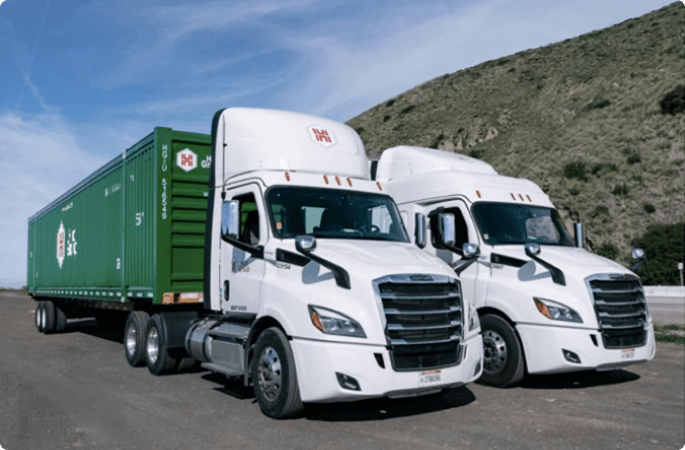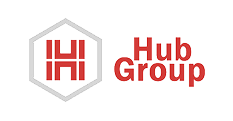Overview
When Jakub, a senior operations leader at Hub Group, reflects on how far their maintenance and service workflows have come, it sounds almost unbelievable.
“Before REACH, everything was manual. Paper DVIRs, emailed service requests, spreadsheets to track vendor progress—it was like managing a modern fleet with 90s tools.”
But not anymore.
Over the past several years, Hub Group, a leading logistics provider with coast-to-coast operations, has completely transformed its service management using REACH. What began as a cautious exploration in 2016 became a full-fledged digital ecosystem by 2018—and today, it’s hard to imagine how it functioned before. With REACH at the center of its fleet support infrastructure, Hub Group can respond faster, analyze service patterns, and empower drivers with minimal friction.
The Backstory: A Problem Worth Solving
Hub Group operates a large, distributed fleet. With terminals spread nationwide and thousands of service events per week, staying ahead of maintenance was a logistical nightmare.
- Paper-based DVIRs were often incomplete or misplaced, leading to non-compliance and a lack of accountability.
- Service event records lived in fragmented email threads, making visibility and coordination nearly impossible.
- Multiple vendors were sometimes unknowingly dispatched to the same job, racking up avoidable costs.
- Driver experience suffered due to constant delays, repetitive paperwork, and lack of communication.
Jakub’s team found themselves constantly reacting—never proactively improving. Requests were submitted with unclear details, delays cascaded across shifts, and supervisors spent hours every week chasing updates. The inefficiencies added up in both time and money.
“We were putting out fires reactively,” Jakub said. “We couldn’t track, audit, or optimize anything. It just wasn’t scalable.”
Discovering REACH: A Platform Built for the Real World
By 2016, Jakub’s team began exploring solutions. REACH stood out because of its features and its philosophy of solving real problems for real fleets.
“REACH didn’t come with a one-size-fits-all solution. They listened. They built it with us. That’s what made it different.”
While other vendors offered generic dashboards and rigid workflows, REACH took a consultative approach. The REACH team worked hand-in-hand with Hub Group to understand how emergency service, inspection compliance, and mobile accessibility played out on the ground. As the platform matured, so did its feature set—shaped in part by feedback from operators like Jakub.
Hub Group officially became a REACH customer in 2018. What followed was a phased rollout that allowed time for adaptation and scaling:
- 2018: Full adoption for service event digitization across all key terminals
- 2020–2021: REACH installed on every driver tablet for instant mobile reporting
- DVIRs, DVERs, and inspection workflows transitioned from paper forms to real-time digital capture
The results were immediate. Visibility increased, errors declined, and team morale improved as day-to-day headaches disappeared.
The Turning Point: Digital Records, Real-Time Visibility
Once the paper trail disappeared, REACH provided something Hub Group never had before: a single source of truth.
- Every DVIR and DVER is now filed electronically at the end of a shift or immediately when an issue occurs.
- All repair statuses are instantly accessible by operations, terminal teams, and leadership.
- Advanced analytics powered by structured data reveal trends—what’s breaking, where, and how often.
That transformation enabled proactive intervention. Fleet managers can now forecast M&R expenses, identify underperforming vendors, and address recurring equipment issues before they escalate.
“We’re not just faster,” Jakub said. “We’re smarter. We know what’s breaking, where, why, and how often.”
Efficiency at Scale: Doing More With Less
Despite growing its fleet significantly, Hub Group hasn’t needed to expand its maintenance team.
- Smaller teams are now empowered with tools to act faster and make better decisions
- Repairs are assigned, approved, and tracked all from within REACH’s centralized dashboard
- Vendors update progress in real-time, reducing the need for status-check calls and emails
The impact? Less administrative labor. Faster dispatching. Fewer errors. The same number of people now handle double the repair events—and do it with greater confidence.
“REACH took what used to be chaos and turned it into a command center,” Jakub said. “It’s scalable, intuitive, and it just works.”
Designed for Drivers: Frictionless, Intuitive, Empowering
Jakub points out that drivers usually open the REACH app on their worst days—when something’s broken, or the truck is sidelined.
So, the design had to be driver-first. The app guides the driver through the issue-reporting process in seconds:
- Pre-filled forms eliminate repetitive entry and user error
- GPS automatically pinpoints the location of the breakdown
- Vehicle and driver IDs are pulled from existing system integrations
- Photo uploads enable accurate diagnosis, reducing miscommunication with repair teams
“Drivers no longer waste time trying to explain a defect. They take a picture, hit submit, and go.”
The app minimizes downtime and maximizes satisfaction. Drivers don’t have to remember complex repair codes or track down terminal staff—they can initiate service with just a few taps.
The result? Fewer idle hours, faster response times, and increased retention.
Unique Features That Solve Real Problems
REACH’s value goes beyond digitization. The platform solves nuanced operational challenges that most fleet tools overlook:
- Duplicate prevention: Automatically detects when a repair is already scheduled, preventing duplicate vendor dispatches
- DVER-to-DVIR linking: Ensures DOT compliance by pairing the pre-repair and post-repair documentation, reducing the risk of audit failures
- Photo-based diagnostics: Mechanics can review images before arriving, bringing the right tools and cutting down on delays
“Some features may seem small,” said Jakub, “but they save thousands in wasted time and resources.”
Reporting That Matters (and What They’re Building Next)
While Hub Group uses internal BI tools, REACH supplies the core data that powers those reports.
- Downloadable datasets feed into internal dashboards managed by the business intelligence team
- Event timelines and resolution data are used in customer conversations and performance audits
- Location-based trends help flag problematic yards or vendors
Jakub notes that they’re just scratching the surface. As more data is aggregated, the potential to drive smarter decisions—from vendor selection to preventative maintenance strategies—is growing.
“We’re getting more sophisticated with our data use every month,” Jakub said. “And REACH is part of that journey.”
Final Word: Mission Critical
“REACH is no longer optional,” Jakub concluded. “It’s mission-critical.”
With REACH, Hub Group has achieved what many in logistics only hope for:
- Digital transformation without disruption
- Real-time visibility without complexity
- Driver-first design without training burden
And most of all:
“We’re not just fixing equipment anymore. We’re fixing the process.”
About REACH
REACH is a modern fleet service management platform built for logistics teams that demand efficiency, transparency, and control. From DVIRs to emergency repairs, REACH delivers a digitized ecosystem that scales with your operations.

